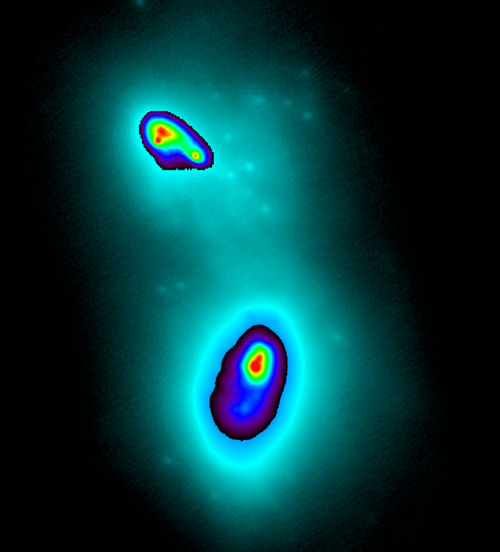
A pair of supermassive black holes at the center of a collision of two galaxies is imaged by the Keck Observatory. The telescope detects near infrared light at wavelengths of 2.12 and 3.8 microns respectively with a spatial resolution of 0.06 arc sec. Using adaptive optics, astronomers can now see the hot dust in the infrared, the stars in the visible and infrared, and the X-rays and radio emissions coming from right around the black holes. Image credit: UCSC\W. M. Keck Observatory |
| © 2025 SPIE Europe |
|